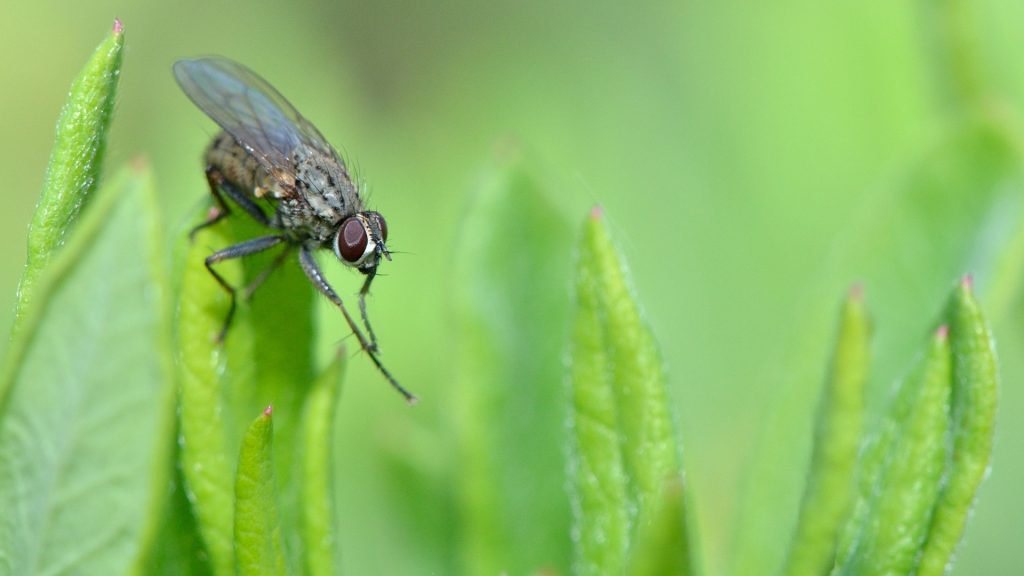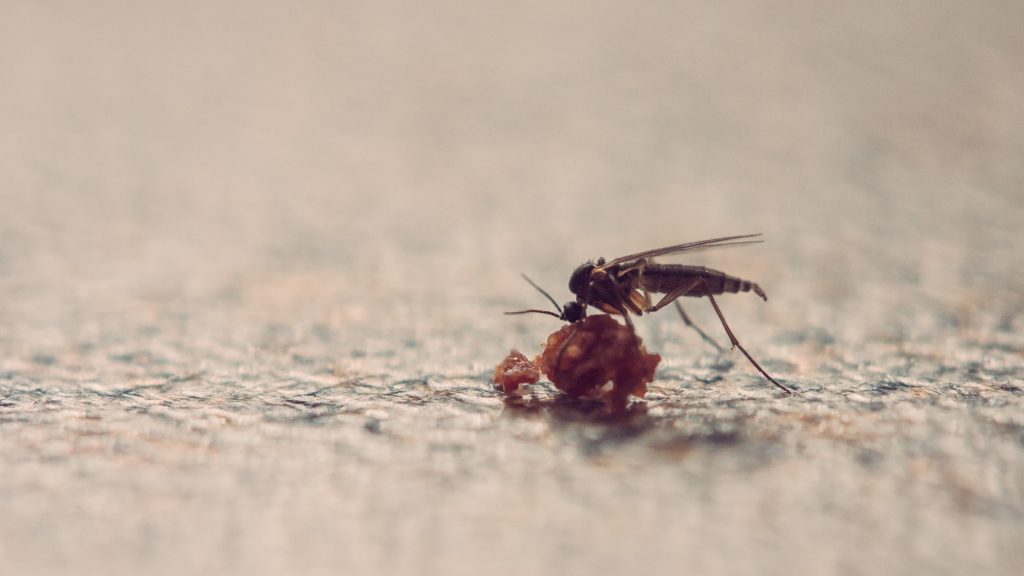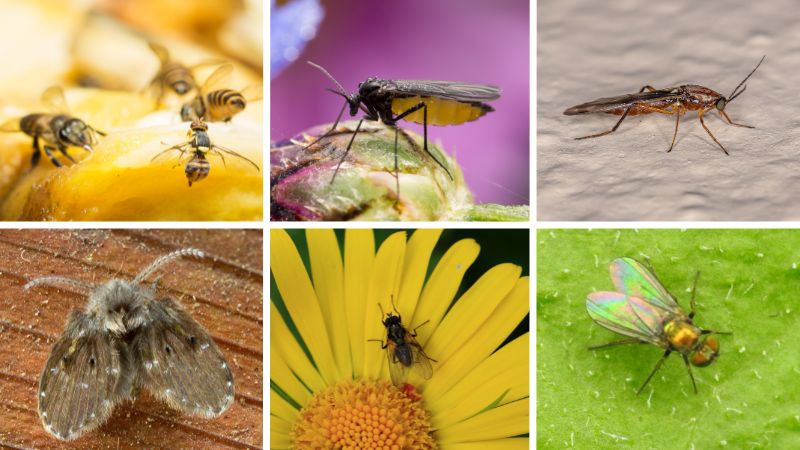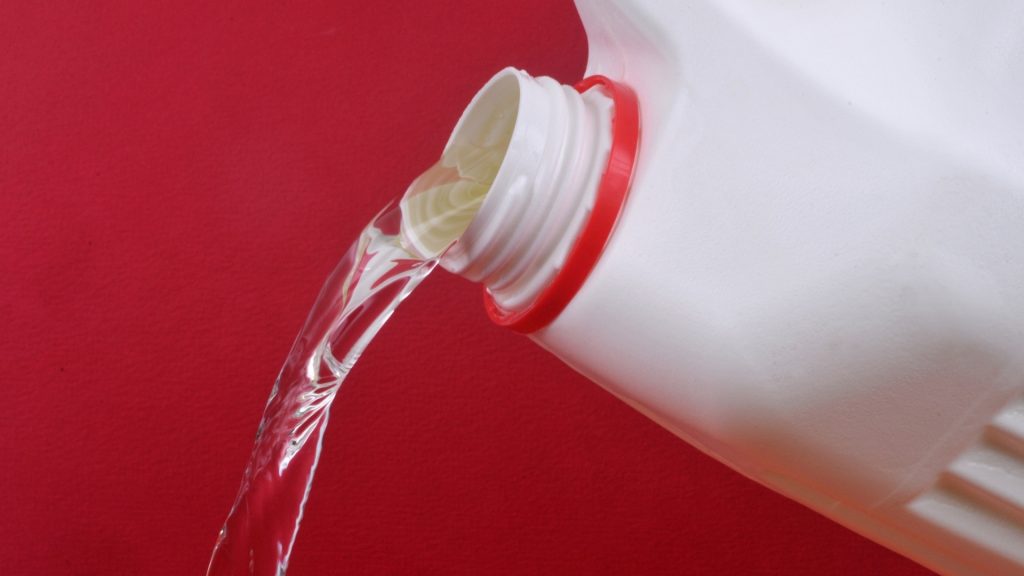Despite being so tiny, gnats are certainly a massive nuisance. They’re irritating, unsanitary, and can even lead to health problems if left unchecked. But how do you get rid of the annoying little things?
How to get rid of gnats in house? To get rid of gnats in the house, you can set traps to lure and catch them, then dispose of them. You can also create or buy sprays to eliminate them, try using flypapers, or installing bug zappers. For the best results, however, calling a professional pest control service is recommended especially if you have severe infestations.
For this article, we’ve pulled together all the best ways to help get rid of gnats in your home, using natural and chemical means. First, let’s talk a little about how and why gnats find their way into your home in the first place.
Gnat Infestation in House

Gnats are tiny, and they can get into a house through almost any opening, including the holes in window screens if they’re large enough. Once you get a few gnats inside your home, it doesn’t take long for more to follow. One or two gnats can quickly turn into an infestation, but why do they come inside?
Why Do I Have Gnats in My House?
Gnats find their way inside your home for several reasons. Sometimes, you may bring them in when you bring in a new houseplant. Additionally, some of them come in through cracks in your house because they’re attracted to the light.
Gnats are more of a problem during the day than at night. However, when they do come out at night, your home is like a shining beacon in the dark.
What Attracts Gnats in the House?

Gnats come in because they’re attracted to all the exciting smells from inside your house. They love fruit, even rotting fruit, but they also like garbage, houseplants, and other sweet-smelling things. Likewise, they’re attracted to warm, moist areas like kitchens and bathrooms.
So if you have lots of houseplants or keep plenty of fruit, don’t be surprised if you start seeing gnats swarming around them. Once they get inside, they also like to hang around drains, particularly those in the kitchen sink, though the bathroom sinks aren’t off-limits either.
How Do Gnats Get in Your House?
The term “gnats” is a catch-all word for any number of small flying insects. These can include species such as midges, no-see-ums, sand gnats, fruit flies, and others. Most of these insects are no more than ⅛ to ¼ of an inch (3.175 – 6.35 mm) long. Things that small can get in practically anywhere.
They can fly through open doors, come in along with houseplants, fly through cracks around windows, or come through window screens. If gnats want in, they’ll find a way.
Additionally, you could be bringing home gnats whenever you bring home produce from the supermarket. Sometimes they’ve already laid their eggs in produce, and when you bring it home, the gnats hatch and swarm inside your home.
Where Do Gnats Come From in the House?
Once gnats get into a home, they look for moist, dark places to hang out when they’re not feeding. Some of them like to stay in drains because they’re dark and full of decomposing matter for them to eat. Kitchen drains are especially coveted.
They also make their homes in pantries, fruit bowls, garbage cans, and anywhere else that’s dark, moist, and not too hot or too cold.
Types of Gnats in House

Bottom from Left to Right: Drain fly, Buffalo gnat, Midge
Because “gnats” is such a catch-all term, there’s no single specific type of gnat that comes inside. Instead, the gnats in your house could be any number of tiny, flying bugs. However, a few types of “gnats” are more likely to come inside than others. Those include:
- Fruit flies
- Fungus gnats
- No-see-ums (biting midges)
- Midges
- Sand gnats (sand flies)
- Houseplant gnats
- Drain flies
- Eye gnats
- Buffalo gnats
- Hessian flies
Related: Flying Insects | Identification, Habitat, and Behavior
9 Ways on How To Get Rid of Gnats Inside the House
Now that you’ve learned what types of bugs come inside your house and why they’re attracted to it, let’s talk about what’s really important: Getting rid of them! There are numerous ways to do this. Some are natural, and others involve using chemicals or pesticides. Take your pick:
Lure Gnats Into Rotten Fruit Jars
One way to catch gnats in a trap is to use their love of rotten fruit against them. If you have a rotten banana, apple, or another piece of fruit, don’t trash it! Instead, mash it up and put it in a fruit jar with a lid.
Put the lid on, and stretch a piece of thin plastic, such as the Glad Cling Wrap. Poke holes in the top so the gnats can get to the fruit. The enticing smell will draw them in, and they’ll be able to squeeze through the tiny holes. However, once they’re in, the plastic wrap won’t allow them to get back out again.
Use Diluted Bleach in Your Drains

If you’re having a problem with gnats in your drains, use diluted bleach to eliminate them. Mix a half-cup of bleach with a gallon of warm water, and slowly pour the mixture down the drains where the gnats stay.
This mixture should get rid of them and whatever enticing smells are drawing them there in the first place. You may also want to wash the entire sink with the mixture for good measure.
Place Homemade “Gnat Traps” Near Fruit
If you notice that gnats are swarming around your fruit bowls or a particular area within your pantry, you can set up homemade traps for them. The rotting fruit trap also works, but if you don’t like the smell of rotting fruit in your house, try this instead.
All you need is some apple cider vinegar, a small container, and your favorite dish detergent. We recommend the Sunlight Dish Detergent, which was used in the video below. We’ve also had equally impressive results with Dawn, so use whichever you like best.
This video shows you how to make the trap:
Install Fly Paper
Although it isn’t attractive and no one likes looking at it, flypaper can be effective for gnats. You can hang it in affected areas in your home. If gnats are hanging out around your plants, you can use sticky traps similar to flypaper made for potted plants.
Here are some tried-and-tested products that we’ve proven effective:
- Fruit Fly Trap: bright color attract flying insects, and glue...
- Easy to use: the fruit fly traps for indoors with sharp bottom...
- Safe flying insect trap: gant traps for house indoor use bright...
- Warm prompt: the temperatures rise in the summer, maybe causes...
- Long lasting: gnats killer indoor trap paper with a very strong...
- FAST-ACTING ELIMINATION: Notice a dramatic decrease in fruit...
- LONG-LASTING PROTECTION: Each ready-to-use, non-staining Terro...
- DISCREET AND ATTRACTIVE DESIGN: The apple-shaped anti fruit fly...
- EASY MONITORING: Built-in windows in this fruit fly catcher allow...
- TARGET BREEDING AREAS: These indoor fruit fly catchers are most...
- IMMEDIATE INSECT CONTROL: The plug in fly trap indoor starts...
- CHILD AND PET SAFE: This indoor fly trap for home does not...
- CONTINUOUS 24/7 PROTECTION: This insect traps indoor option...
- DISCREET AND ADAPTABLE DESIGN: With its flying insect trap indoor...
- LARGE COVERAGE AREA: Offering protection over 400 sq ft, this bug...
Make Your Own Homemade Zapper Spray
To make this zapper spray, you’ll need the following items and ingredients:
- A plastic spray bottle
- 2tbps apple cider vinegar
- 1L of water
- 1tbsp Sugar
- Dish detergent
Mix water, apple cider vinegar, sugar, and a few drops of dish detergent, and pour it into your spray bottle. Then, you can shoot the offending pests on sight. It’ll get rid of them, but it won’t harm your plants, and it isn’t toxic or dangerous to you, your children, or your pets.
Get Gnats Drunk

Many people wondering how to catch gnats are surprised to learn the answer is as simple as red wine. You can use the same type of plastic-covered container used with the rotten fruit, but instead of fruit, fill it with red wine.
Gnats are attracted to the scent of the wine. They fly in, and the plastic wrap keeps them from flying out. Additionally, you could use dish detergent to hold them in instead.
Hang a Bug Zapper
Hanging a bug zapper is another way to get rid of gnats, although it’s not the most attractive way to do it. The gnats are attracted to the light of the zapper, especially if it’s the only light in a dark room, and will fly into it and fry themselves. Again, not pretty; but nevertheless, it’s simple and effective.
Use Chemicals
If getting rid of gnats naturally isn’t important to you, there are plenty of chemical sprays you can buy. Just be sure to read the warning labels carefully since some of these products aren’t safe for humans, plants, or animals.
Here are great options you can try out:
- Kills flies; Gnats; mosquitoes and Small flying moths
- Also kills listed insects on Ornamental plants
- Indoor and outdoor use
- Kills mosquitoes that may transmit West Nile virus and kills...
- Kills aphids; whiteflies; Japanese beetles; mealy bugs;...
- Bug spray that quickly kills flies, mosquitoes and gnats
- Plant-based active ingredient bug killer safe for use around...
- Entomologist tested bug spray made with botanical extracts to...
- Bug killer for indoor and outdoor use, wherever bugs try to...
- Rooted in Nature, Optimized by Science
- Kills & repels mosquitoes for up to 4 weeks
- Also kills fleas, gnats, ticks and other insect pests
- Spray paths and wooded areas to kill ticks
- Simply attach a garden hose to the bottle and spray.
- Harmless to garden plants
Call the Professionals
If your gnat infestation has gotten out of control, call a professional pest control company, and let them deal with your gnat problem for you. Again, be sure to ask them about the safety of their products, especially if you have indoor pets or young children.
What To Use To Get Rid of Gnats in House? | Insecticides Guide
As mentioned, if you’re looking for a non-natural way to get rid of gnats yourself, there are plenty of options available. Aside from the ones we’ve already mentioned, here are a few other products you can consider:
- KILL FRUIT, DRAIN & SEWER FLIES: Get rid of the fly infestation...
- PERFECT FOR HOMES & BUSINESSES: Green Gobbler is perfect for...
- EASY TO USE: Simply pour 8 ounces into your problem drain. This...
- MADE WITH CITRONELLA & CINNAMON: Our formula contains natural...
- GREEN GOBBLER GUARANTEE: Green Gobbler cares about its customers....
- FAST ACTING & EASY TO USE - Simply Pour This Specially Formulated...
- HOW IT WORKS SAFELY-This Thick Gel Treatment Clings & Sticks To...
- HARMLESS & LONG LASTING - Harmless To Drains, Pipes, Septic...
- GREAT FOR COMMERCIAL KITCHENS, BARS & RESTAURANTS - Clean...
- Safe and strong essential oil formula (Safe to use around kids...
- Safe to use around kids and pets when used as directed
- Tested and proven to start killing flying bugs in seconds**...
- Use indoors or outdoors
- Spray at all angles
These are products with which we’ve had success. Give them a try or do some experimenting with the many products available in stores or online.
How To Get Rid of Gnats in My House Plants?
There are plenty of commercial sprays you can use that are safe for houseplants. You can also use the homemade mixture of apple cider vinegar and dish detergent to spray them. Our favorite way to get rid of gnats on houseplants is with the sticky traps discussed earlier.
How To Get Rid of Gnats in House Naturally?
The best way to get rid of gnats in the house naturally is to use one of the safe, homemade methods mentioned above. The rotten fruit in the jar, red wine, and apple cider vinegar mixtures are natural ways to rid yourself of gnats.
Gnats also aren’t fond of peppermint, so soak peppermint essential oil on cotton balls then dab it around areas where you know gnats frequent is also a good idea.
Best Home Remedies To Get Rid of Gnats in House

There are plenty of gnat control home remedies and homemade traps you can make to help you get rid of gnats in your house. Since we’ve already mentioned the most effective ones, we won’t go over all of them again.
However, we thought we’d add a few other things in addition to peppermint oil that gnats don’t like. Burning candles with the following essential oils in them can help repel gnats:
- Lemon
- Citronella
- Vanilla
- Lavender
Related: How to Get Rid of Gnats and Fruit Flies Using Essential Oils | No-Nonsense Guide
How To Keep Gnats Out of House?
Once you get rid of gnats, you want them to stay gone. The best ways to ensure they don’t come back is to:
- Keep everything clean.
- Regularly use the diluted bleach mixture in your sinks and drains.
- Throw fruit outdoors when it starts to go bad.
- Take out your trash regularly.
- Don’t give the gnats any incentive to come back in, and most of the time, they won’t.
- Don’t forget about the peppermint, lemon, lavender, vanilla, and citronella repellents, either.
Summary
Gnats are a nuisance. They’re aggravating and unsanitary, and they make your home look nasty, even when it’s not. Luckily, there are plenty of ways to get rid of them, and most of them are relatively inexpensive and easy. Try the above-listed methods and see if you have any luck. If all else fails, you can always call professional pest control for help.
List of Sources
Bethke, J. A., & Dreistadt, S. H. (2013). Pests in Gardens and Landscapes: Fungus Gnats.
Cranshaw, W. S., & Peairs, F. B. (2017). Flies in the Home.
Potter, M.F. (1994). Fruit Flies.
Townsend, L. (1997). Midges and Gnats.
Waldvogel, M., Alder, P., & Crawley, S. (2016). Fungus Gnats Indoors.
- Bed Bug Surge 2025: How to Detect, Prevent, and Safely Eliminate Infestations in Top U.S. Cities - June 18, 2025
- Asian Needle Ants Invade US Homes: 2025 Guide to Identification, Risks, and Effective Control - June 11, 2025
- New World Screwworm Alert: How US Livestock Owners Can Prevent Outbreaks and Protect Herds [Summer 2025 Update] - June 8, 2025










